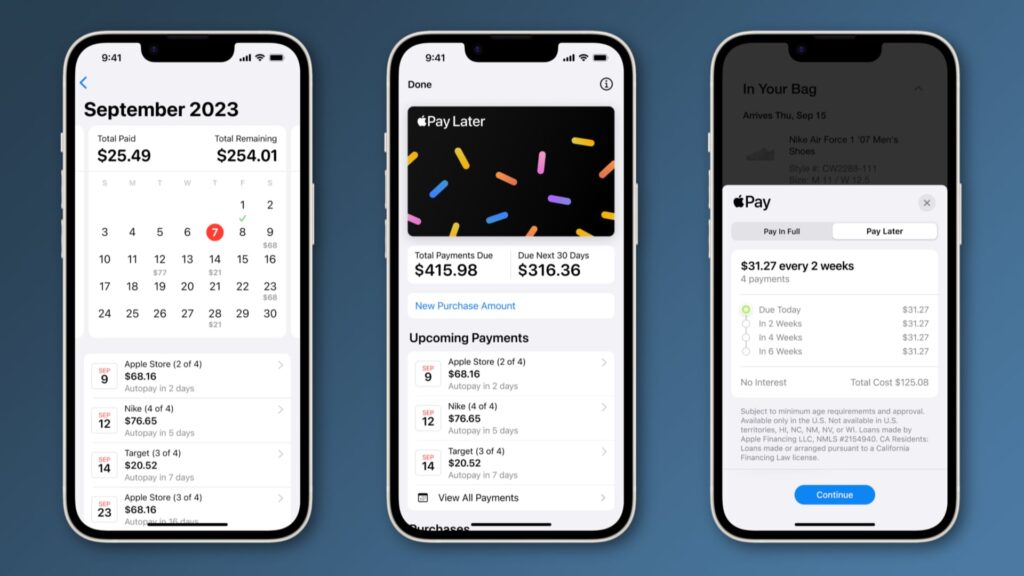In today’s fast-paced digital world, businesses are increasingly turning to cloud services for scalability, flexibility, and cost efficiency. As more organizations move their infrastructure to the cloud, it becomes essential to monitor these environments to ensure optimal performance, uptime, and security. Cloud monitoring tools have become indispensable in tracking the performance, availability, and health of cloud-based services, ensuring that your cloud infrastructure operates efficiently.
This blog post delves into the best cloud monitoring tools available today, highlighting their features, benefits, and how they can help you manage your cloud systems effectively. Whether you’re a small startup or a large enterprise, the right cloud monitoring tools can streamline your operations, help you detect problems early, and ensure the smooth functioning of your cloud environment.
Table of Contents
What is Cloud Monitoring?
Cloud monitoring refers to the process of observing, tracking, and managing the performance and availability of cloud infrastructure and services. Unlike traditional IT infrastructure, cloud environments are often distributed across various data centers and managed by third-party providers. Cloud monitoring ensures that your cloud-based applications, servers, databases, and services are performing as expected.
Key components of cloud monitoring include:
- Performance Monitoring: Tracks the response times, uptime, and throughput of cloud applications.
- Availability Monitoring: Ensures that cloud services are accessible and operational, identifying outages and downtime.
- Resource Utilization: Tracks usage patterns of cloud resources, including CPU, memory, storage, and network bandwidth.
- Security Monitoring: Identifies potential threats and vulnerabilities in the cloud environment.
- Log Management: Collects, analyzes, and stores logs from cloud services to identify issues and improve troubleshooting.
Why is Cloud Monitoring Important?
Cloud monitoring is essential for several reasons:
- Performance Optimization: Monitoring tools provide insights into the health and performance of your cloud applications, helping you optimize them for better user experience and higher productivity.
- Cost Management: Cloud providers often bill based on resource usage, and without proper monitoring, costs can spiral out of control. Monitoring tools help keep track of resource consumption and optimize spending.
- Uptime Assurance: Cloud environments are prone to outages or disruptions. Effective cloud monitoring tools alert you to issues before they escalate, helping ensure high availability.
- Security: With cyber threats increasing, monitoring tools help identify unusual activities that could indicate a security breach, such as unauthorized access or DDoS attacks.
- Troubleshooting and Incident Management: By providing detailed metrics, logs, and alerts, cloud monitoring tools help you quickly identify the root cause of problems, enabling faster resolution.
Types of Cloud Monitoring Tools
Before diving into the best tools, it’s essential to understand the different types of cloud monitoring tools available:
- Infrastructure Monitoring: Monitors the underlying infrastructure such as virtual machines, containers, and networks. It tracks performance metrics like CPU, memory, disk usage, and network throughput.
- Application Performance Monitoring (APM): Focuses on the performance of applications running in the cloud. APM tools provide insights into application health, response times, and user experience.
- Log Management Tools: Collects and analyzes logs from cloud services to identify errors, bottlenecks, and security incidents.
- Security Monitoring Tools: Focus on tracking potential security vulnerabilities, threats, and breaches within the cloud infrastructure.
- Cost and Billing Monitoring: Tracks cloud resource consumption and provides insights into the cost of cloud services, helping you optimize usage and reduce unnecessary spending.
Best Cloud Monitoring Tools in 2025
Here are some of the best cloud monitoring tools available in 2025, each offering unique features to cater to different monitoring needs.
1. Datadog
Overview: Datadog is one of the most popular cloud monitoring platforms, known for its ability to provide real-time monitoring and observability across the full stack of your cloud infrastructure. It offers integrated monitoring of applications, databases, services, and cloud infrastructure, providing a comprehensive view of your cloud environment.
Key Features:
- Full-stack monitoring (cloud infrastructure, applications, and logs).
- Powerful APM (Application Performance Monitoring) capabilities.
- Real-time anomaly detection using machine learning.
- Customizable dashboards to visualize data.
- Seamless integration with cloud providers like AWS, Azure, and Google Cloud.
- Supports hybrid cloud environments.
Pros:
- Comprehensive observability across cloud, containers, and on-prem environments.
- Detailed application tracing and troubleshooting.
- Customizable alerts to detect issues in real time.
Cons:
- Pricing can be expensive for smaller teams or businesses.
- The learning curve can be steep for new users.
Best For: Enterprises and large-scale businesses looking for end-to-end monitoring with deep visibility into application performance.
2. Prometheus
Overview: Prometheus is an open-source monitoring and alerting toolkit designed for reliability and scalability. It is often used in conjunction with Kubernetes for containerized applications. Prometheus collects and stores metrics as time-series data, providing powerful query capabilities for monitoring cloud resources.
Key Features:
- Open-source and free to use.
- Highly customizable alerting and monitoring for containers and microservices.
- PromQL, a powerful query language for advanced metric queries.
- Integration with Kubernetes and containerized environments.
- Efficient data storage with a time-series database.
- Large community support.
Pros:
- Cost-effective for small teams and developers.
- Ideal for monitoring containerized applications and microservices.
- Strong integration with Kubernetes and Docker.
Cons:
- Requires self-hosting and setup, which can be complex.
- Not ideal for beginners due to its steep learning curve.
Best For: Development teams and DevOps engineers working with Kubernetes and containerized environments who need a customizable and open-source monitoring solution.
3. New Relic
Overview: New Relic is a comprehensive cloud monitoring platform that provides deep insights into application performance, infrastructure health, and user experience. It supports a wide range of technologies, making it a versatile solution for monitoring both cloud and on-premise environments.
Key Features:
- End-to-end visibility of your cloud applications and infrastructure.
- Advanced APM capabilities with real-time transaction tracing.
- AI-driven insights to detect and diagnose performance issues.
- Integration with various cloud services like AWS, Azure, and Google Cloud.
- Real-time metrics and customizable dashboards.
Pros:
- Easy-to-use interface and powerful reporting features.
- A comprehensive platform for cloud monitoring and performance management.
- Strong integration with other tools and services.
Cons:
- Expensive for large teams or enterprises.
- Requires significant configuration for complex environments.
Best For: Enterprises and organizations needing a robust, all-in-one cloud monitoring solution that includes application performance management and infrastructure monitoring.
4. CloudWatch (Amazon Web Services)
Overview: AWS CloudWatch is a cloud-native monitoring service provided by Amazon Web Services. It enables you to monitor AWS resources and applications in real time, track resource utilization, and set up alarms for specific metrics. CloudWatch is tightly integrated with other AWS services, making it ideal for users already within the AWS ecosystem.
Key Features:
- Real-time monitoring of AWS resources and applications.
- Custom metrics and logs monitoring.
- Automated alarms for performance thresholds.
- Deep integration with other AWS services.
- Dashboards for visualizing metrics and logs.
Pros:
- Seamless integration with AWS services.
- Cost-effective for businesses already using AWS.
- Easy to set up and use for AWS-based applications.
Cons:
- Limited support for non-AWS cloud environments.
- More complex configurations may require expertise in AWS.
Best For: Organizations that rely heavily on AWS and want a native, integrated solution for monitoring their cloud infrastructure and applications.
5. Zabbix
Overview: Zabbix is an open-source monitoring solution that provides comprehensive visibility into cloud and on-premise environments. It can monitor various cloud platforms, servers, applications, and network devices. Zabbix is known for its scalability and flexibility, making it a popular choice for large enterprises.
Key Features:
- Open-source and free to use.
- Real-time monitoring of servers, virtual machines, cloud resources, and applications.
- Supports a wide range of data collection methods, including SNMP, IPMI, and JMX.
- Customizable alerts and dashboards.
- Scalability for large environments.
Pros:
- Cost-effective for organizations on a budget.
- Highly customizable and flexible for diverse environments.
- Strong support for hybrid IT infrastructures.
Cons:
- Setup and configuration can be complex, requiring technical expertise.
- The user interface is not as modern as some commercial alternatives.
Best For: Large enterprises or organizations that need a highly customizable and open-source solution to monitor both cloud and on-premise environments.
6. Nagios
Overview: Nagios is one of the oldest and most trusted monitoring platforms, widely used for monitoring infrastructure, networks, and applications. It has evolved to support cloud environments, making it suitable for businesses that require robust monitoring and alerting capabilities.
Key Features:
- Comprehensive monitoring of IT infrastructure, networks, and cloud resources.
- Customizable plugins for different cloud platforms (AWS, Azure, etc.).
- Real-time alerting and reporting.
- Strong community support and documentation.
- Integration with third-party tools like Slack, PagerDuty, and others.
Pros:
- Highly customizable and extensible with plugins.
- Strong community support and a wide range of integrations.
- Reliable alerting and reporting system.
Cons:
- Complex configuration, especially for new users.
- The interface is not as modern or user-friendly as newer tools.
Best For: Businesses that need a flexible and extensible monitoring solution for a hybrid IT environment and are comfortable with a steep learning curve.
7. SolarWinds
Overview: SolarWinds is a popular IT management software suite that includes cloud monitoring tools. Known for its comprehensive monitoring solutions, SolarWinds provides in-depth insights into cloud infrastructure, applications, and networks. Its tools are suitable for both small businesses and large enterprises.
Key Features:
- Full-stack monitoring for applications, infrastructure, and networks.
- Real-time performance metrics and alerting.
- Cloud-native monitoring for AWS, Azure, and Google Cloud.
- Easy-to-use interface with customizable dashboards.
- Detailed reporting and analytics.
Pros:
- User-friendly interface and easy setup.
- Strong customer support and educational resources.
- Comprehensive monitoring for hybrid IT environments.
Cons:
- Pricing can be high for smaller businesses.
- Limited support for non-cloud platforms compared to cloud-native tools.
Best For: Small to medium-sized businesses and enterprises that need an all-in-one cloud and infrastructure monitoring solution.
Conclusion
Selecting the best cloud monitoring tool depends on your organization’s specific needs, budget, and existing infrastructure. Whether you’re looking for a free open-source option like Prometheus or need an all-in-one enterprise solution like Datadog or New Relic, there is a cloud monitoring tool that fits every requirement.
For businesses heavily invested in AWS, CloudWatch offers seamless integration, while Datadog and New Relic provide comprehensive full-stack monitoring for organizations with complex cloud environments. For those looking for cost-effective open-source solutions, Prometheus and Zabbix are excellent choices.
Ultimately, the best cloud monitoring tool for your organization is one that aligns with your operational requirements, cloud strategy, and budget, ensuring you can optimize performance, reduce costs, and maintain security across your cloud infrastructure.
Visit the SaaS Corner home page for more such content. You can also visit Skywinds Solutions to build your MVP.


